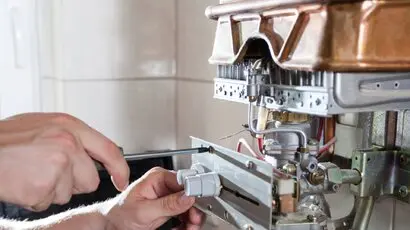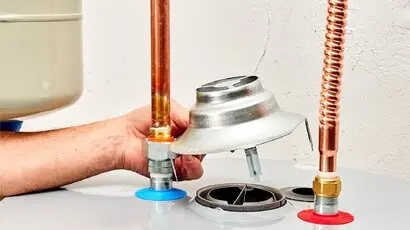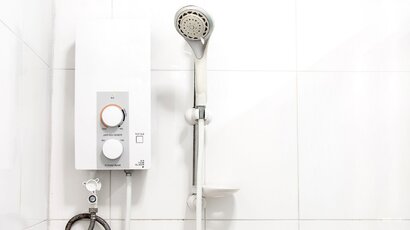What Size Hot Water Heater Do I Need? – Hot Water System Size Guide
Do you want to purchase a new hot water system but wondering about the size? We are here with an informative guide that should help you make the right choice!
If you’re having hot water issues at home or work, a new hot water heater could be the solution you need!
Purchasing the right-sized hot water system is essential; otherwise, you might end up with a minor system that does not meet your needs. Different sizes of hot water systems are available, and tankless variants are even available.
We have discussed each type in detail to help you make the right choice. We will discuss tankless water heaters and then heaters with tanks.
Tankless heaters are great for small homes and apartments, whereas tanks are more suited to businesses, factories, or larger houses. In the next few sections, we’ll guide you through measuring your hot water needs, so let’s dive in.
Fitting a large water tank in an apartment or small home might be difficult. For instance, a 190-litre tank can be quite sizeable! A wall-hung, tankless system could be a perfect fit in these situations.
These can be connected to the pipelines to get hot water from your taps and showers. They also come in varying sizes, and suitable options are available for small bathrooms.
To determine the size required, read through the following steps
To begin with, you will have to calculate the peak water usage in the house. This is usually calculated by considering the flow rate of all faucets or appliances in litres per minute (lpm). This will help you understand the flow rate needed from the tankless hot water system.
You can calculate the peak water usage based on the busiest time of the day. If you use the bathtub and the dishwasher simultaneously, you will need a hot water system with a 22.71 lpm flow rate.
The next determining factor is the average water temperature entering your house. To get an accurate temperature reading, you can immerse a thermometer in the cold tap water.
To do this, you must subtract the regular water temperature from 43 degrees Celsius. For example, if the water temperature in your house is 16 degrees, then the hot water system will have to heat the water by 27 degrees before you use it. That is how you will get the required temperature.
When you purchase a hot water system, it will have a hot water flow rate mentioned. If the hot water system has a flow rate of 37.85 lpm, and the temperature rise required is 20 degrees, it might work at 37.85 lpm.
However, if the temperature rises by 40 degrees, the flow rate is reduced to 26.5 lpm. Remember this when purchasing, and you should not have any problems.
The size of the tank can be measured depending on the number of people who will use it. For example, if you have one to two people in the house, a tank size of 87 to 136 litres should work well. You will need a tank with a capacity of 136 to 174 litres for two to four people.
A tank size of 174 to 211 litres will work well in a large family with three to five people. And if the family has five people or more, you can purchase a large tank of 211 litres. The trick is to add 37 litres for every individual added after that.
This measurement is for tank-style heaters, and most mid-sized families opt for a 150-litre tank, which is generally affordable and suits most purposes. However, you can always purchase a different size based on your family’s requirements.
Along with the tank capacity, you must consider the water heater’s first-hour rating. The FHR, or first-hour rating, is defined as the amount of heated water produced by the tank within 60 minutes. The FHR should clarify how efficient the tank is and how quickly it heats.
While checking the FHR, you must see if it matches the number of litres of heated water the family needs. To calculate the amount of hot water required around the house, we created a list that should include all the activities.
Use this to calculate the needed amount and then purchase a water heater. Take the busiest part of the day and estimate the water required because you may be using multiple appliances simultaneously.
This section will talk about some crucial factors to keep in mind while making a purchase.
Showers use the most hot water, and it is important to measure water usage. If you have a baby in the house, calculate half the water an average human needs. Also, if you have someone in the house who takes long showers, calculate the water used accordingly.
Always consider the costs of never paying a significant amount for a hot water system. We have mentioned the average water usage in Australian households so that you can purchase the right-sized heater.
It is best not to go for a bigger size than required, as you will unnecessarily spend more money. The water will take more time, and operating costs will increase unnecessarily.
Also, if the heater has a water tank, it would take up a lot of space, which you can avoid if you control water usage.
If you are unsure about the water temperature throughout the year, consult local authorities. They will help you by providing the details of the water temperature throughout the year, specifically at the coldest time of the year.
When determining what size water heater you need, it’s essential to understand the different types of systems available. The main options for Australian homes are solar hot water systems, gas hot water systems, and electric hot water systems.
Solar hot water systems are a great energy-efficient option, providing most or all of a household’s hot water from the sun’s renewable energy. With Australia’s sunny climate, solar hot water is a popular choice that can lead to long-term savings on bills.
A gas hot water system quickly heats water using natural gas piped directly into the unit. Gas hot water is pretty energy efficient and suits many homes’ needs. Operating costs are ongoing, though, as natural gas must be purchased.
Electric systems use electricity to heat water in a storage tank or on demand. An electric hot water system may have low upfront costs, but can be expensive to run long-term as electricity prices rise.
If your home experiences cold temperatures, opt for a higher lpm than needed. The flow rate will automatically reduce when the temperature falls, but you should get ample hot water even on winter’s coldest days.
Keep this in mind before making a choice. With that, we have reached the end of this guide, so it is time to wrap up. We hope you can purchase the right water heater for the house. Also, ensure you get the hot water systems serviced once or twice yearly to prevent malfunctioning.
Whether you need assistance choosing the right water heater for your home, installation, or replacement, our Melbourne plumbers are here to help. Our team has years of experience with various brands and types of water heaters at WP Plumbing. Contact us today for all your plumbing needs!
Take care and stay warm!
Want to know more about the benefits and importance of servicing your water heater routinely? Don’t worry, because we’ve got you covered with our informative guide.
Thinking of installing a new hot water heater in your house? Here are some reasons you need to hire a professional for installation, repair and maintenance.
Selecting the right instantaneous hot water system ensures comfort and efficiency for your household. Explore key features, benefits, and expert tips to make an informed choice.


